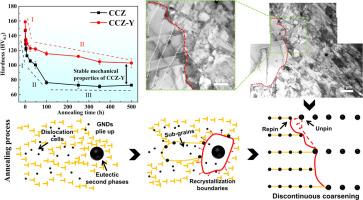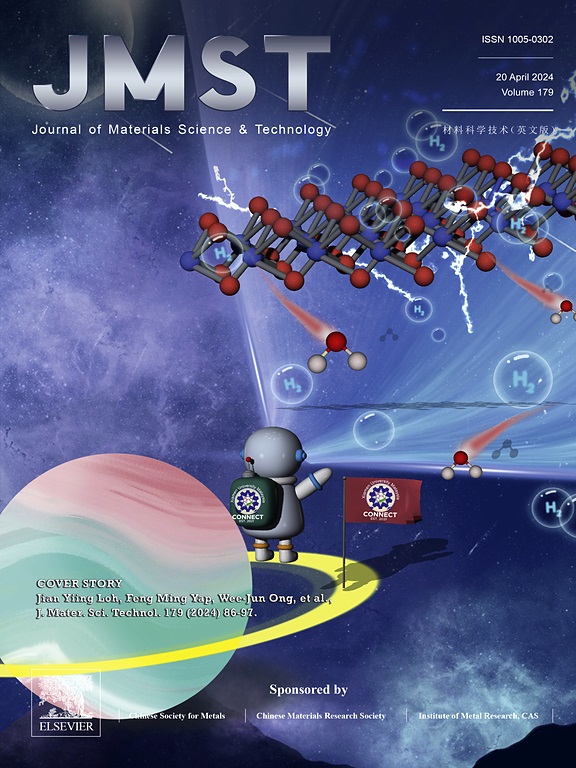Enhanced high-temperature stability in CuCrZrY alloys: reduced precipitate coarsening and recrystallization
IF 11.2
1区 材料科学
Q1 MATERIALS SCIENCE, MULTIDISCIPLINARY
引用次数: 0
Abstract
Precipitation strengthening is a critical strategy for developing high-performance Cu alloys that combine exceptional strength with high conductivity. However, this method often loses effectiveness at elevated temperatures due to the poor thermal stability of the precipitates, which tend to coarsen rapidly, leading to accelerated mechanical degradation. In this study, we introduce a CuCrZrY alloy that demonstrates remarkable structural and mechanical stability at high temperatures. Notably, after annealing at 550 °C for 500 h, only 18.8% of the grains were recrystallized. Through a combination of experimental investigations and first-principles calculations, we discovered that the strong solute-vacancy binding energy of Y in Cu significantly impedes bulk diffusion of solute, thereby inhibiting precipitate coarsening and recrystallization. The coarsening rate constant for the CuCrZrY alloy was found to be approximately half that of the CuCrZr alloy. During prolonged annealing, the formation of sub-grains via recovery enhances boundary diffusion, leading to a layered distribution of precipitates. The recrystallization model further elucidates the interplay between eutectic phases, precipitates, and the migration of recrystallization boundaries. Initially, eutectic phases contribute to the accumulation of geometrically necessary dislocations during rolling, which triggers recrystallization in the early stages of annealing. Additionally, the triple junctions of sub-grain and recrystallization boundaries facilitate precipitate coarsening, thereby reducing the pinning force. Consequently, the CuCrZrY alloy undergoes a unique recrystallization process characterized by discontinuous precipitate coarsening and a cycle of pinning-depinning-repinning of recrystallized grain boundaries. These insights provide valuable guidance for designing Cu alloys with stable microstructural and mechanical properties under prolonged high-temperature conditions.

求助全文
约1分钟内获得全文
求助全文
来源期刊

Journal of Materials Science & Technology
工程技术-材料科学:综合
CiteScore
20.00
自引率
11.00%
发文量
995
审稿时长
13 days
期刊介绍:
Journal of Materials Science & Technology strives to promote global collaboration in the field of materials science and technology. It primarily publishes original research papers, invited review articles, letters, research notes, and summaries of scientific achievements. The journal covers a wide range of materials science and technology topics, including metallic materials, inorganic nonmetallic materials, and composite materials.
 求助内容:
求助内容: 应助结果提醒方式:
应助结果提醒方式:


